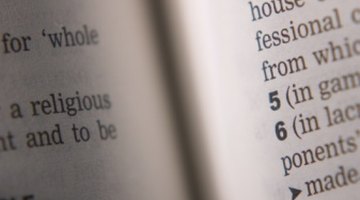"Juxtapose" is a verb that is related to the noun "juxtaposition" and is formed from it by the process called backformation. To juxtapose two images, concepts or ideas means to put them side by side in order to better see the relationship between them or for a strong emotional effect. "Juxtapose" is a transitive verb, meaning that it takes a direct object.
Example:
"The scenes of rural beauty were juxtaposed with scenes of urban decay" is an example of a sentence using the word "juxtapose."
“Juxtapose” Definition
Synonym.com defines "juxtapose” as follows: “to place (different things) side by side (as to compare them or contrast them or to create an interesting effect)."
Some of the synonyms of the verb “juxtapose” are:
- “appose,”
- “connect,”
- “pair,”
- “bring together,"
- “place in proximity”
- and “set side by side.”
The two things being juxtaposed can be tangible and concrete, such as:
- two different photographs,
- or more abstract, such as the opinions of two different politicians as presented in an article.
Juxtaposing two things or two concepts – that is, setting them side by side – can highlight interesting relations between them that you wouldn’t have otherwise noticed.
Juxtaposing can highlight interesting relations that you would not have otherwise noticed.
How to Use “Juxtapose” in a Sentence
Juxtapose is a transitive verb, meaning that it takes a direct object. However, it does not take just any direct object. You cannot say "The photographer juxtaposed his image." Because the concept of juxtaposition requires two things (or images, or scenes, or opinions or ideas), you have to juxtapose something with something else. So, the direct object of the verb "juxtapose" must be plural, as in the following sentence: "The researcher has juxtaposed the results of the two experiments to emphasize their inconsistencies."
Alternatively, the direct object of the verb “juxtapose” might be singular, but in that case, it must be followed by a prepositional phrase that indicates the second part of the juxtaposition, such as:
The photographer has juxtaposed the image of a landfill with the photograph of a baby whale to highlight the harmful effect of plastic waste on marine wildlife.
The scenes of rural beauty were juxtaposed with scenes of urban decay.
One can also use two direct objects connected with the conjunction “and,” as in the following example from a Los Angeles Times article published on December 5, 2018:
"At the halfway mark, Corbet juxtaposes one of Celeste’s dreams and an equally dreamlike music video, suggesting the tenuous links between reality, fantasy and artistic creation."
"Juxtaposition" is a noun related to the verb "juxtapose." To use "juxtaposition" in a sentence, follow it with the preposition "of" that introduces the two objects being juxtaposed:
The juxtaposition of the two passages allows us to see and compare the characters’ personal development.
Etymology of “Juxtapose”
The word “juxtapose” has an interesting etymology.
We typically think of words formed from other words by the addition of affixes. So, in this case, you could guess that “juxtaposition” is formed from “juxtapose” by adding the suffix “-tion,” similar to the pairs “derive” – “derivation” and “organize” – “organization.”
However, in this case, the opposite is the case: The verb “juxtapose” is formed from “juxtaposition” by the process called backformation.
The verb “juxtapose” is formed from “juxtaposition” by the process called backformation.
There is historical evidence for this idea. The noun “juxtaposition” appears in English documents as early as the mid-17th century, while the verb “juxtapose” does not begin to appear until two centuries later. The noun “juxtaposition” itself derives from the combination of the Latin word juxta (“near”) and position.
The noun “juxtaposition” itself derives from the combination of the Latin word juxta (“near”) and position.
More commonly, new words are formed by adding affixes to existing words, but backformation is when the reverse happens – that is, an affix or what looks like an affix is trimmed down from an existing word to create a new word. So, “juxtapose” is formed from “juxtaposition” by dropping the “-tion.”
Another example of a common word formed by backformation is the verb "edit." It has been formed from the noun "editor" by removing what looked like the suffix, “or.”
Related Articles
References
Tips
- 'Juxtapose' does not mean to compare or contrast one thing with another.
Writer Bio
Tanya Mozias Slavin is a former academic and language teacher. She writes articles about education and linguistic technology, and has published in the Washington Post, Fast Company, CBC and other places. Find her at www.tanyamoziasslavin.com










